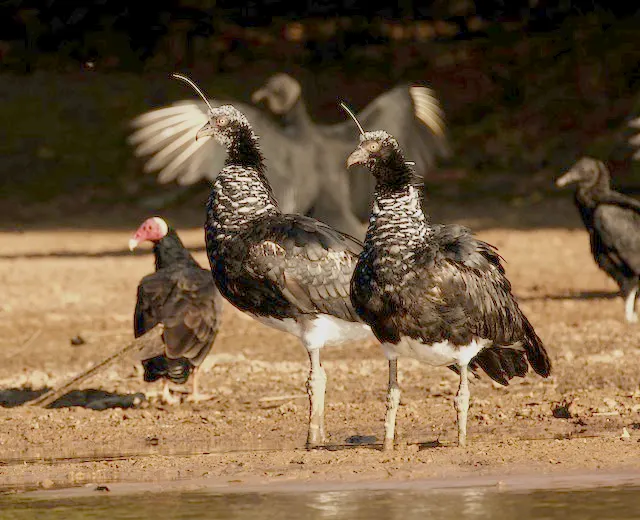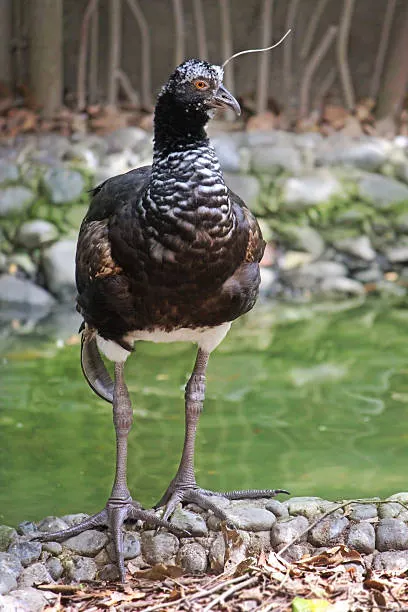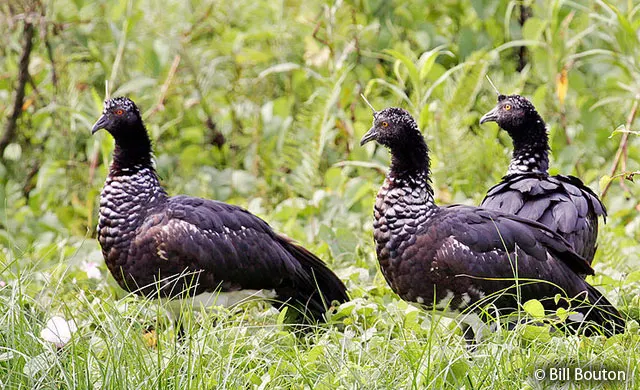Facts About Horned screamer

The Horned Screamer (Anhima cornuta) is one of the most unusual and lesser-known birds found in the wetlands of South America. With a unicorn-like horn on its head, loud, trumpet-like calls, and a body that looks like a cross between a goose and a prehistoric creature, the horned screamer truly stands out in the avian world. Despite its striking features, it remains mysterious to many, even in regions where it is native.
Here’s an in-depth look at everything you need to know about this fascinating bird.
1. Where It Lives: South America’s Swampy Secret
The horned screamer is found primarily in northern and central South America, including countries such as:
- Colombia
- Brazil
- Venezuela
- Ecuador
- Peru
- Bolivia
It prefers marshes, swamps, riverbanks, and flooded grasslands—habitats that offer both water and dense vegetation for cover and feeding. These birds are non-migratory, meaning they tend to stay within their chosen wetland regions year-round.
2. That Strange Horn Isn’t What You Think
The most distinctive feature of the horned screamer is the long, horn-like projection on its forehead. It looks like a unicorn’s horn but is actually a keratin-covered spine that grows from the skull.
- It can grow up to 6 cm (2.4 inches) long.
- It is not used for fighting and isn’t flexible.
- The purpose of the horn is still not clearly understood, though it may play a role in display or mating rituals.
3. Not a Goose – But Looks Like One
Although it resembles a goose in body shape, the horned screamer belongs to a distinct family called Anhimidae, not closely related to geese or ducks. It is one of only three species in this family (the others are the Northern and Southern screamers).
Key physical traits include:
- Large, bulky body
- Long neck
- Small head
- Partially webbed feet
- Prominent spurs on the wings (used in territorial disputes)
4. Ear-Splitting Calls That Echo Across the Wetlands
True to its name, the horned screamer is known for its loud, far-carrying vocalizations. Its cry is often compared to:
- A trumpet
- A donkey bray
- A mechanical honk
These calls are used for marking territory, signaling distress, and maintaining communication between mates or groups. The sound can be heard from over a mile away, making it one of the loudest birds in the Americas.

5. Wing Spurs: Built-In Weapons
Each wing of the horned screamer is equipped with two sharp, bony spurs. These are used in:
- Intraspecies combat (especially between males)
- Defending territory
- Establishing dominance
Although they look menacing, the birds rarely injure each other seriously during disputes.
6. Herbivorous Diet and Feeding Habits
Unlike many wetland birds that rely on fish or insects, the horned screamer is entirely herbivorous. Its diet mainly consists of:
- Aquatic plants
- Grasses
- Leaves
- Seeds
It forages while wading in shallow water or walking along riverbanks. Their large gut is specially adapted to digest tough plant material efficiently.
7. Reproduction and Nesting Behavior
Horned screamers are monogamous, often forming life-long pair bonds. Breeding takes place during the wet season when water levels rise.
- Nests are built on floating vegetation or raised islands in wetlands.
- Females lay 2 to 5 eggs.
- Both parents take part in incubation and raising the chicks.
- Chicks are precocial, meaning they hatch fully feathered and can walk and swim shortly after hatching.
8. Conservation Status: Stable But Watching Closely
Currently, the horned screamer is listed as Least Concern by the IUCN. Despite its limited range, it maintains stable populations thanks to:
- Remote and protected habitats
- Low hunting pressure (due to tough, unpleasant-tasting meat)
However, it remains vulnerable to habitat destruction, especially from:
- Wetland drainage
- Agricultural expansion
- Water pollution
Wetland conservation is key to ensuring the long-term survival of this species.
9. An Important Cultural and Ecological Symbol
In local cultures, the horned screamer is sometimes seen as a symbol of untouched wilderness or a herald of seasonal change due to its loud calls during rainy periods. Ecologically, it plays a role in maintaining wetland plant balance through grazing.
10. A Bird Like No Other
The horned screamer is a living oddity—an evolutionary relic, a powerful vocalizer, and a swamp-dwelling spectacle. Its unique combination of features makes it a fascinating study in avian adaptation and diversity.

Conclusion
With its unicorn-like horn, deafening cries, and gentle herbivore lifestyle, the horned screamer remains one of South America’s most intriguing and underrated birds. Though not widely known outside ornithological circles, this majestic wetland dweller deserves more attention—not just for its quirks, but for the important role it plays in the rich ecosystems of the tropics.



